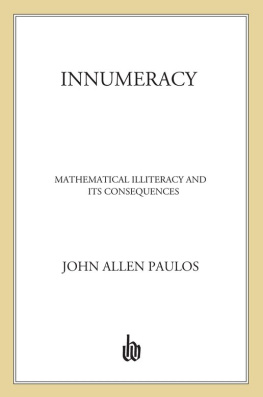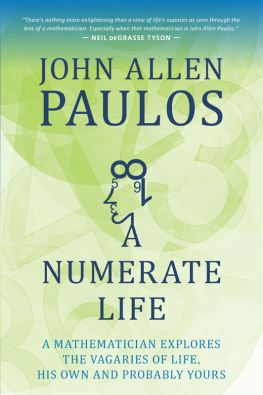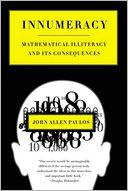
Contents
THE WILEY BICENTENNIAL-KNOWLEDGE FOR GENERATIONS
 ach generation has its unique needs and aspirations. When Charles Wiley first opened his small printing shop in lower Manhattan in 1807, it was a generation of boundless potential searching for an identity. And we were there, helping to define a new American literary tradition. Over half a century later, in the midst of the Second Industrial Revolution, it was a generation focused on building the future. Once again, we were there, supplying the critical scientific, technical, and engineering knowledge that helped frame the world. Throughout the 20th Century, and into the new millennium, nations began to reach out beyond their own borders and a new international community was born. Wiley was there, expanding its operations around the world to enable a global exchange of ideas, opinions, and know-how.
ach generation has its unique needs and aspirations. When Charles Wiley first opened his small printing shop in lower Manhattan in 1807, it was a generation of boundless potential searching for an identity. And we were there, helping to define a new American literary tradition. Over half a century later, in the midst of the Second Industrial Revolution, it was a generation focused on building the future. Once again, we were there, supplying the critical scientific, technical, and engineering knowledge that helped frame the world. Throughout the 20th Century, and into the new millennium, nations began to reach out beyond their own borders and a new international community was born. Wiley was there, expanding its operations around the world to enable a global exchange of ideas, opinions, and know-how.
For 200 years, Wiley has been an integral part of each generations journey, enabling the flow of information and understanding necessary to meet their needs and fulfill their aspirations. Today, bold new technologies are changing the way we live and learn. Wiley will be there, providing you the must-have knowledge you need to imagine new worlds, new possibilities, and new opportunities.
Generations come and go, but you can always count on Wiley to provide you the knowledge you need, when and where you need it!

Copyright 2007 by John Wiley & Sons, Inc. All rights reserved.
Published by John Wiley & Sons, Inc., Hoboken, New Jersey.
Published simultaneously in Canada.
No part of this publication may be reproduced, stored in a retrieval system, or transmitted in any form or by any means, electronic, mechanical, photocopying, recording, scanning, or otherwise, except as permitted under Section 107 or 108 of the 1976 United States Copyright Act, without either the prior written permission of the Publisher, or authorization through payment of the appropriate per-copy fee to the Copyright Clearance Center, Inc., 222 Rosewood Drive, Danvers, MA 01923, (978) 750-8400, fax (978) 750-4470, or on the web at www.copyright.com . Requests to the Publisher for permission should be addressed to the Permissions Department, John Wiley & Sons, Inc., 111 River Street, Hoboken, NJ 07030, (201) 748-6011, fax (201) 748-6008, or online at http://www.wiley.com/go/permission .
Limit of Liability/Disclaimer of Warranty: While the publisher and author have used their best efforts in preparing this book, they make no representations or warranties with respect to the accuracy or completeness of the contents of this book and specifically disclaim any implied warranties of merchantability or fitness for a particular purpose. No warranty may be created or extended by sales representatives or written sales materials. The advice and strategies contained herein may not be suitable for your situation. You should consult with a professional where appropriate. Neither the publisher nor author shall be liable for any loss of profit or any other commercial damages, including but not limited to special, incidental, consequential, or other damages.
For general information on our other products and services or for technical support, please contact our Customer Care Department within the United States at (800) 762-2974, outside the United States at (317) 572-3993 or fax (317) 572-4002.
Wiley also publishes its books in a variety of electronic formats. Some content that appears in print may not be available in electronic format. For information about Wiley products, visit our web site at www.wiley.com .
Library of Congress Cataloging-in-Publication Data is available.
ISBN-13: 978-0-470-04001-0
ISBN-10: 0-470-04001-7
1 0 9 8 7 6 5 4 3 2 1
Preface
This book is about those little numbers that we just cannot escape. Try to remember the last day you didnt hear at least something about probabilities, chance, odds, randomness, risk, or uncertainty. I bet its been a while. In this book, I will tell you about the mathematics of such things and how it can be used to better understand the world around you. It is not a textbook though. It does not have little colored boxes with definition or theorems, nor does it contain sections with exercises for you to solve. My main purpose is to entertain you, but it is inevitable that you will also learn a thing or two. There are even a few exercises for you, but they are so subtly presented that you might not even notice until you have actually solved them.
The spousal thanks is always more than a formality. I thank A v for putting up with irregular work hours and everything else that comes with writing a book, but also for help with Greek words and for reminding me of some of my old travel stories that you will find in the book. I am deeply grateful to Professor Olle Hggstrm at Chalmers University of Technology in Gteborg, Sweden. He has read the entire manuscript, and his comments are always insightful, accurate, and clinically free from unnecessary politeness. If you find something in this book that strikes you as particularly silly, chances are that Mr. Hggstrm has already pointed it out to me but that I decided to keep it for spite. I have also received helpful comments from John Haigh at the University of Sussex, Steve Quigley at Wiley, and from an anonymous referee. Thanks also to Kris Parrish and Susanne Steitz at Wiley, to Sheree Van Vreede at Sheree Van Vreede Publications Services for excellent copyediting, and to Amy Hendrickson at Texnology Inc. for promptly and patiently answering my LaTeX questions.
v for putting up with irregular work hours and everything else that comes with writing a book, but also for help with Greek words and for reminding me of some of my old travel stories that you will find in the book. I am deeply grateful to Professor Olle Hggstrm at Chalmers University of Technology in Gteborg, Sweden. He has read the entire manuscript, and his comments are always insightful, accurate, and clinically free from unnecessary politeness. If you find something in this book that strikes you as particularly silly, chances are that Mr. Hggstrm has already pointed it out to me but that I decided to keep it for spite. I have also received helpful comments from John Haigh at the University of Sussex, Steve Quigley at Wiley, and from an anonymous referee. Thanks also to Kris Parrish and Susanne Steitz at Wiley, to Sheree Van Vreede at Sheree Van Vreede Publications Services for excellent copyediting, and to Amy Hendrickson at Texnology Inc. for promptly and patiently answering my LaTeX questions.
A large portion of this book was written during the tumultuous Fall of 2005. Our move from Houston to New Orleans in early August turned out to be a masterpiece of bad timing as Hurricane Katrina hit three weeks later. We evacuated to Houston, and when Katrinas sister Rita approached, we took refuge in the deserts of West Texas and New Mexico. Sandstorms are so much more pleasant than hurricanes! However, it was also nice to return to New Orleans in January 2006; the city is still beautiful, and its chargrilled oysters are unsurpassed. I am grateful to many people who housed us and helped us in various ways during the Fall and by doing so had direct or indirect impact on this book. Special thanks to Kathy Ensor & Co. at the Department of Statistics at Rice University in Houston and to Tom English & Co. at the College of the Mainland in Texas City for providing me with office space. Finally, thanks to Professor Peter Jagers at Chalmers University of Technology, who as my Ph.D. thesis advisor once in a distant past wisely guided me through my first serious encounters with probabilities, those little numbers that rule our lives.
PETER OLOFSSON
www.peterolofsson.com
New Orleans,2006
1
Computing Probabilities: Right Ways and Wrong Ways
THE PROBABILIST
Whether you like it or not, probabilities rule your life. If you have ever tried to make a living as a gambler, you are painfully aware of this, but even those of us with more mundane life stories are constantly affected by these little numbers. Some examples from daily life where probability calculations are involved are the determination of insurance premiums, the introduction of new medications on the market, opinion polls, weather forecasts, and DNA evidence in courts. Probabilities also rule who you are. Did daddy pass you the X or the Y chromosome? Did you inherit grandmas big nose? And on a more profound level, quantum physicists teach us that
Next page










 ach generation has its unique needs and aspirations. When Charles Wiley first opened his small printing shop in lower Manhattan in 1807, it was a generation of boundless potential searching for an identity. And we were there, helping to define a new American literary tradition. Over half a century later, in the midst of the Second Industrial Revolution, it was a generation focused on building the future. Once again, we were there, supplying the critical scientific, technical, and engineering knowledge that helped frame the world. Throughout the 20th Century, and into the new millennium, nations began to reach out beyond their own borders and a new international community was born. Wiley was there, expanding its operations around the world to enable a global exchange of ideas, opinions, and know-how.
ach generation has its unique needs and aspirations. When Charles Wiley first opened his small printing shop in lower Manhattan in 1807, it was a generation of boundless potential searching for an identity. And we were there, helping to define a new American literary tradition. Over half a century later, in the midst of the Second Industrial Revolution, it was a generation focused on building the future. Once again, we were there, supplying the critical scientific, technical, and engineering knowledge that helped frame the world. Throughout the 20th Century, and into the new millennium, nations began to reach out beyond their own borders and a new international community was born. Wiley was there, expanding its operations around the world to enable a global exchange of ideas, opinions, and know-how.

 v for putting up with irregular work hours and everything else that comes with writing a book, but also for help with Greek words and for reminding me of some of my old travel stories that you will find in the book. I am deeply grateful to Professor Olle Hggstrm at Chalmers University of Technology in Gteborg, Sweden. He has read the entire manuscript, and his comments are always insightful, accurate, and clinically free from unnecessary politeness. If you find something in this book that strikes you as particularly silly, chances are that Mr. Hggstrm has already pointed it out to me but that I decided to keep it for spite. I have also received helpful comments from John Haigh at the University of Sussex, Steve Quigley at Wiley, and from an anonymous referee. Thanks also to Kris Parrish and Susanne Steitz at Wiley, to Sheree Van Vreede at Sheree Van Vreede Publications Services for excellent copyediting, and to Amy Hendrickson at Texnology Inc. for promptly and patiently answering my LaTeX questions.
v for putting up with irregular work hours and everything else that comes with writing a book, but also for help with Greek words and for reminding me of some of my old travel stories that you will find in the book. I am deeply grateful to Professor Olle Hggstrm at Chalmers University of Technology in Gteborg, Sweden. He has read the entire manuscript, and his comments are always insightful, accurate, and clinically free from unnecessary politeness. If you find something in this book that strikes you as particularly silly, chances are that Mr. Hggstrm has already pointed it out to me but that I decided to keep it for spite. I have also received helpful comments from John Haigh at the University of Sussex, Steve Quigley at Wiley, and from an anonymous referee. Thanks also to Kris Parrish and Susanne Steitz at Wiley, to Sheree Van Vreede at Sheree Van Vreede Publications Services for excellent copyediting, and to Amy Hendrickson at Texnology Inc. for promptly and patiently answering my LaTeX questions.